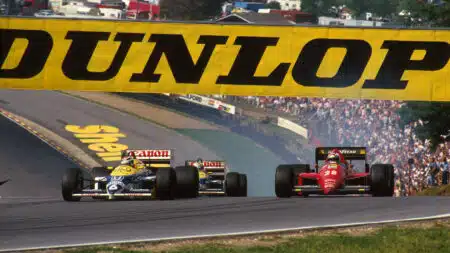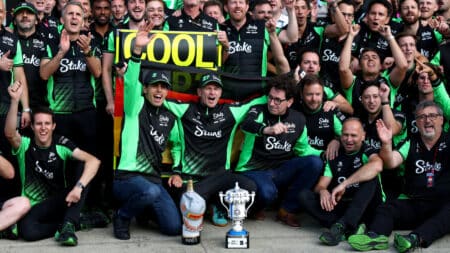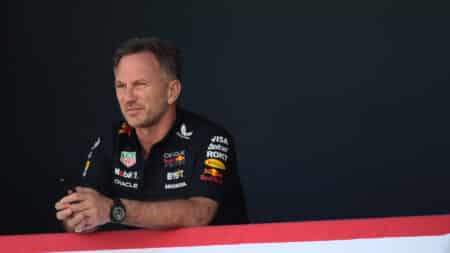
Brands Hatch: F1's beloved countryside amphitheatre
On this day in 1964, the roar of F1 engines echoed through the Kent countryside for the first time, as Brands Hatch made its debut on the world stage
Click here to buy the lead image.
So… depending on whether the proposed new qualifying system is adopted for Melbourne or Barcelona, or sometime later or not at all, we might see a few tactical peculiarities arising from it. Assuming that the elimination system is actually adopted, the Q3 session becomes for the top eight (rather than the top 10) fastest from Q2. Given the order of performance apparent from Barcelona testing, the top eight cuts right through an incredibly tightly bunched pack of cars.
We can assume that the two Mercedes and two Ferraris will, under normal circumstances, get comfortably through. But the next fastest after that is impossible to call: Force India, Williams, Red Bull and Toro Rosso all have legitimate claim to that status based upon testing form. So there are potentially eight cars fighting for four positions in Q3 (with all the usual provisos about testing form etc, but stay with me).
However, getting into Q3 means – just as it’s always done – starting the race on the set of tyres with which you’ve already taken some life out of in qualifying. Those not making Q3 will start on fresh tyres, with a free choice between the nominated compounds. So, of those eight evenly matched cars, the four in Q3 (from 5th-8th places) will be at a strategic disadvantage on race day to those that have qualified 9th-12th. Those 5th-8th position cars might normally be expected to have to pit quite early, rejoining behind those 9th-12th position cars.
Those latter ones will be running at a pace significantly slower than the just-pitted guys on their fresh tyres are capable of going and will be going for quite a few more laps yet. So unless those fresh-tyre guys can quickly overtake those older-tyred cars, their race strategy will have been severely compromised. They will have suffered the downsides of the early stop in terms of race position, but without the compensating upside of then lapping faster (because they are stuck in slower traffic when their tyres are good). By the time the slower cars pit ahead of them, the best of the faster guys’ tyres will already be gone. The cycle may then repeat as the Q2 guys are now on the fresher tyres and catching fast.
That particular pack of eight cars looks like where we will be seeing most of the actual racing. Those aside from Mercedes and Ferrari getting into Q3 will absolutely have to be able to overtake after their first stops to make their race-day strategy work. So as things stand, how are the traits of each of the drivers of those four teams equipped to deal with that challenge?
Taking each team in turn, Force India has two drivers – Sergio Pérez and Nico Hulkenberg – at absolute opposite ends of the spectrum in their approach. Sergio has an uncanny way of getting the Pirellis to last without surrendering too much lap time. Minimising the amount of time he places them under lateral load – even if the peak loads are higher – is his secret. Hulkenberg, when he gets the car balance he needs, is one of the fastest guys out there but still, after all these years, struggles to get the tyre life needed, especially on strategies that require long stints. Pérez is one of the most difficult guys of all to overtake. If he doesn’t make it into Q3, he’s going to be the one guy that those who do are going to dread coming out behind after the first stops. That said, Pérez had found a better set-up direction than Hulk with the B-spec Force India and was out-qualifying him towards the end of the year. Nico really needs to a) find a similarly fruitful set-up direction in order to utilise his natural one-lap pace and b) work out how to stretch out his tyre life without losing too much lap time. With the traits he showed last year, this new situation could hardly be worse for him. By contrast, Pérez looks set to emerge as one of the stars of this particular conundrum-style racing.
At Williams, the trend last year was that Valtteri Bottas was emerging as faster than Felipe Massa (into the second half of the season, Massa was genuinely faster in qualifying only once). Bottas, with a less busy steering and throttle style than Massa, also tends to be easier on the rear rubber. If they both get through to Q3 or both get eliminated in Q2, all things being equal Bottas should beat Massa. But if Bottas is at the lower end of Q3 and Massa the upper end of Q2, the race day odds would seem to favour Felipe. A lot depends therefore on just exactly where the Williams FW38 slots into the competitive order.
Daniel Ricciardo and Daniil Kvyat have what appears to be an unenviable task at Red Bull. Relative to the opposition around them, their lap time is derived from cornering speed and until it gets the upgraded Illien Renault in the car later in the season, the likelihood is that it will remain slow at the end of the straights and therefore very vulnerable to being passed. Ricciardo in particular may find it hard to help himself from utilising all the car’s grip and balance on Saturday to get into Q3 – which, given the traits of the car, would be even more strategically damaging than for other cars. At least four of those others cars – the two Force Indias and two Williams – are going to be a lot faster at the end of the straights. It may be that Red Bull has to swallow its pride, trim a lot of wing off the car for acceptable straight line speed and just take the pain on not getting into Q3. Ricciardo at least has shown himself to be an inventive and aggressive overtaker, a skill that Kvyat may need to work on more than ever this year.
Toro Rosso’s prospects are very interesting, especially in the early part of the year when its 2015-spec Ferrari motors will be at their most competitive. They just might have a much more raceable combination of grip and straight-line speed than Red Bull and in Max Verstappen they have arguably the best overtaker on the grid. Carlos Sainz is far from outclassed by him and is still developing and he too may find himself giving the senior team a lot of headaches.
From the Archive: “Old head, young shoulders.” Mark Hughes on Max Verstappen (July 2015).
How it’s going to pan out – or even if we have this qualifying system at all – is anyone’s guess. But this looks likely to be the part of the field where most of the action will be. Because on testing form it appears as if Ferrari remains around 0.5s or so adrift of Mercedes. Let’s hope, for the sake of the championship, there is more to come from the Ferrari – which, after all, has a new short-nose aero concept, a new front suspension, a new intercooler layout and new engine packaging – than the development of a theme Mercedes (its elongated S-duct notwithstanding). Maybe it’s just taking Ferrari longer to acquire the knowledge to get everything from such a different car. Maybe.

On this day in 1964, the roar of F1 engines echoed through the Kent countryside for the first time, as Brands Hatch made its debut on the world stage

Nico Hülkenberg's long-awaited first podium at Silverstone came after a virtuoso drive, but it only came about thanks to one unforgettable qualifying lap in 2020, as Mark Hughes recalls

Nico Hülkenberg's first F1 podium followed a faultless British GP drive where he went against his team with strategy calls that proved crucial in wet weather at Silverstone. Here are the radio messages that show how he pulled it off

From shock Zoom calls to ruthless midnight firings, F1’s history is littered with team principals and executives who are in command one moment and unceremoniously sacked the next